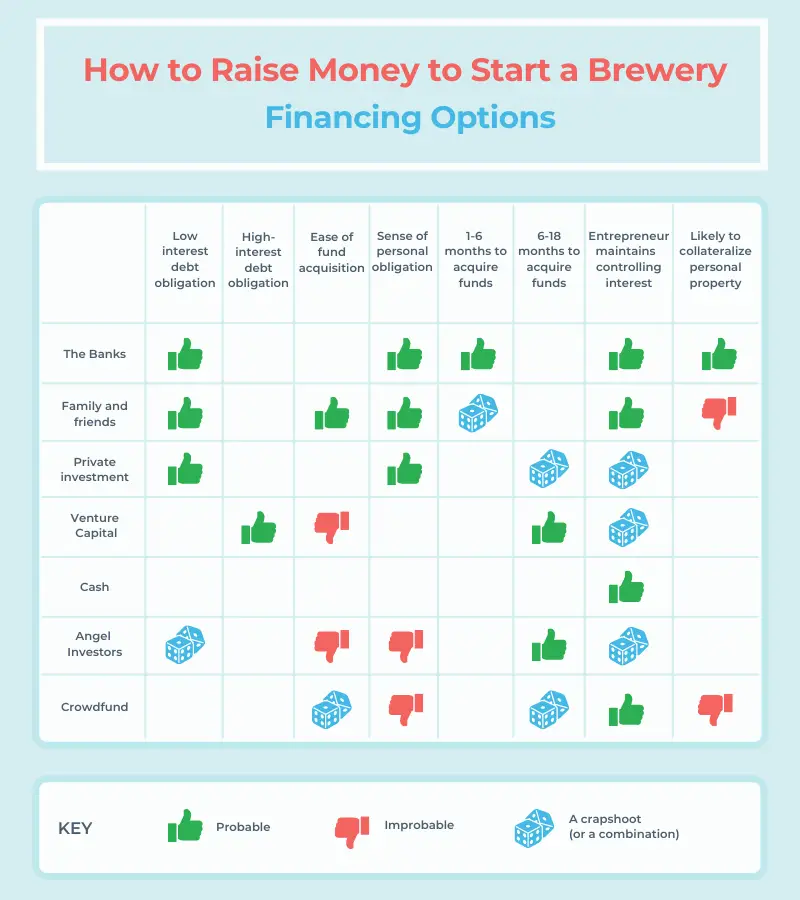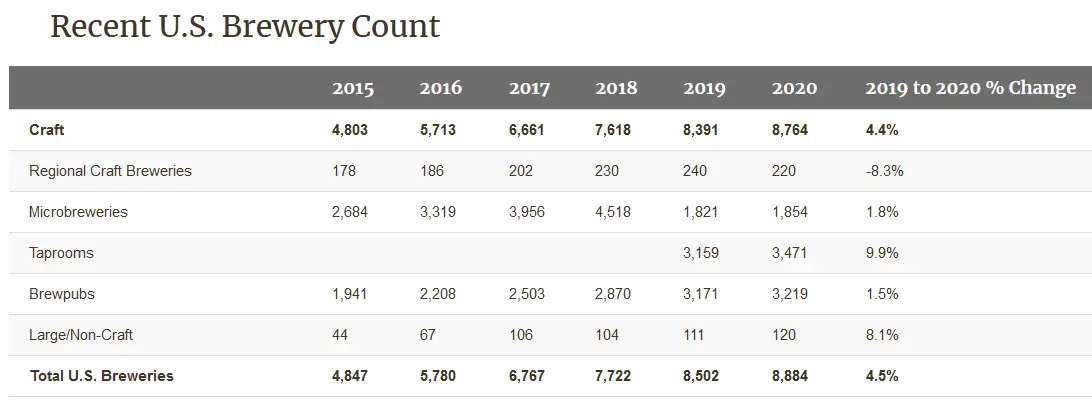Starting a brewery is hard work and serious business. It takes two primary things, money and talent. One without the other will get you nowhere fast. Are you a Master Homebrewer, ready for a second career? Are you in it for the glory and grits? I can share my experience and lead you down the path of dreams. Just be ready.
Starting breweries cost money and lots of it. Three things are required. A persuasive story, a bullet-proof business plan, and solid financing. There are multiple avenues for financing. With money in hand, half the battle is won. Now build it, run it, and make real beer.
I have built two breweries in my time, from the ground up. There were existing structures, both gutted. So, both facilities were new installs. In the beginning, I had to beg, borrow and steal (just an expression) and people came forward to help.
Later with a track record, the banks were interested and willing to back me. I learned a different set of lessons from both projects. I would project 50 – 150K to undertake any nano/ small brewery venture, and this does not include a restaurant, though could include a small pub space.
Before getting into the details, here’s a simple Matrix to illustrate financing options:

The Banks
Private investors or not, one needs a good banker. There are 3 key elements be clear about:
- Banks intensely dislike risk.
- They demand collateral.
- Once they are in, it is in their interest to see you succeed.
A bank prefers if you don’t need the money and want property or liquid assets to back or co-sign for your loan.
It is not impossible to get an uncollateralized loan from them but incredibly difficult. The riskier it is, also the higher your interest rate.
If there is a house to back your loan, or a large amount of cash, say 50 – 200K in a Money Market, then banks are quite interested to talk to you. “Put up my house, you are kidding right?!” Nope, done all the time. If none of these things are at hand, read on, there are other roads.

Family and friends
The banks have turned you down, but the dream burns bright. Family and friends may be approached for investment.
This is a slippery slope as you have personal relationships on the line. No doubt we are all so convinced of our own success commensurate with the passion we feel, so it is a sure thing we tell them.
I formed a Sub-S corporation. There are other options such as an LLC– Limited liability company, but Sub-S was the road I took. All profits and losses filter directly down to the investors. For small closely held companies with say no more than 20 shareholders, this was the best choice.
For anyone to even listen there must be a business plan, thorough, conservative, and well-researched. It will likely take 6 months to write unless the author is unemployed with ample time on their hands. There are resources to help. If you have an MBA in the family, perhaps they will help.
Do not be pie-in-the-sky. Within the plan, be real, expect hardship, trouble, breakdowns, and years of losses. Then show the ability to overcome them all. Reality sells.

Private investment
As mentioned above there are the family and friends and then there are community acquaintances that may be brought in.
When forming a corporation, it has the right to issue shares. A small closely held company may only issue 100 shares, therefore each share will be worth 1% of the company.
If 150K is needed to build the brewery, raise 100K through investment, for example, and the remaining 50K try to secure private loans.
It is common for investors to invest a modest amount, say 10K and then loan 35K. It makes them comfortable they have a way to recoup some of their money if things go south, as you are paying them back their loan monthly, with interest.
There should also be 10 – 20% of shares unsold for future expansion. The corporation has the right to issue as many shares as it wants. In the future it may decide to issue more shares for capital investment and expansion. Just be careful. If the investor bought in at 5% and 5 years down the road only had 2.5%, there must be a good reason for it.
Don’t worry, your partners, lawyers, and advisors will help throughout this process; at least they are supposed to.

Venture Capital
There are investor groups who lend money to small start-ups. They are pretty conservative and slightly less risk-averse than banks.
Brokers will help you find these investors for a fee, at least 5 – 10% of the total investment. Also, these groups will likely want to keep a controlling interest of the business unless the entrepreneur puts a lot of their own money in, some real skin in the game.

Cash on the Barrelhead
25 years ago, I knew a guy in rural North Carolina, who teamed up with his brother and built a brewery with cash. It was 50 minutes from Asheville. Rental was dirt cheap, most things were bought second hand, but the plant was opened with ZERO debt.
If I had to guess I’d say that the total cost of set-up, including a new professionally fabricated 10bbl. kettle and a slightly used 10 bbl. cylindroconical fermenter, was only about $45,000. Everything else was used, salvaged or hand-fabricated.
They played the long game and it worked out for them. They stayed small and local for many years and carried no debt. 15 years later they were distributed by Budweiser (a good thing) and had multiple taprooms in Asheville and its environs. Several years back they also acquired a production brewery in Coastal South Carolina. Yet another road to travel.

Angel Investors
There are groups who will loan money because they like you. In Asheville, there was a progressive gentleman who was heir to an insurance family. He started a small-business incubator and would support and underwrite entrepreneurs in the community.
He didn’t need the money, so he loaned it out for the betterment of the community. If he liked your tacos, he’d underwrite your truck, and if the truck hit it, he’d build the restaurant too. By 2002, Asheville was the model of a Southern revitalized city, the downtown real-estate was 98% occupied as opposed to only 60% in 1989.
I remember when the first fancy café opened on Pack Square in ’89. It was nice and also sketchy, as drunks, homeless, and ne’er do-wells wandered around after dark. That was long ago. Now it’s hippies, hipsters and progressives that may run you over with their electric scooters, skateboards, or street performance.

Crowdfund
Crowdfunding is popular now and has truly transformed some lives, there is no doubt. An aspiring brewer could try this angle.
The story must be convincing, overtly so. When there are refugees, life and death operations, and disaster relief to compete with, a brewer’s dream is a tough sell. However, there are crowdfunds that lean towards and support entrepreneurs, so try every avenue. Two crowdfunds I’ve worked with and explored are Indiegogo and GoFundMe. Kickstarter is another.

A Blend of the Best
If the aspiring pro brewer is not financially set with money to spare, chances are that they must utilize several of the options above.
25 years ago, I knew a guy who had about 8K in cash and a dream. He needed about 110K more. One fellow who owned a homebrew shop was in for 10K. The homebrew fellow had a relative who invested 6K and lent another 32K. Several other friends and family members came in with small investments of 3-6K each.
Construction had begun. Only about ½ the total cash had been raised but a deal had “been reached” with a leasing company. The cash was to pay for the construction, the leasing company would pay for the equipment.
Money was spent, space was gutted, concrete poured, conduit run…then the leasing company pulled out.
This young man in tears, had spent thousands of his investor’s dollars, only to come up short. The walls shook, the wind howled, and the world slowly fell apart around him.
Turns out, a distant relative by marriage, not aware of the shortfall, was willing to make a low-interest loan, the cash borrowed against some old stock. My young friend had only to pay interest. The full amount was reached.
The brewery took shape and the young journeyman brewed deep in the underground of Old Asheville city.
Find a way, it lies before you.
A Parting Shot

The following shows the state of beer industry growth pre-Covid. I would like to point out to all aspiring brewers, dream big and act wisely.
Production breweries and even brewpubs are growing at 1 – 2% only. Regional/ larger crafts are down 8%.
Taprooms, which are recently included in industry metrics as they drive craft beer culture, are the only ones to grow near 10%, short of the non-craft category.
My take-away is this. No matter what, sell beer by the glass. There are thousands of brands, and countless individual products looking for shelf space. Shelf space is finite. The profit margin on a single glass of beer mitigates this disadvantage.
NOTE :
KMB Consulting can assist you in all of your challenges, large or small. Brewers need support and input. It is an artisanal craft, refined by years in the brewhouse. It is also an uncommonly specialized business.
Interested in a start-up or expansion? From conception to construction and pilot brews, we have the experience.
Today’s brewers have puzzles that need a fresh perspective. I’ve walked in your shoes. I know the victories and struggles that come with the brewer’s life. Reach out to us. No problem is unfixable. Check KMB Consulting.

